On a glorious sunny autumn day, 22 October 2023, a varied group of outdoor swimmers and dippers met to Go Swimming together and have a walk at two beautiful lakes in West Norfolk, along with some of their friends. As well as having a lovely day, they wanted to show that it’s possible to swim safely outdoors, including in these lakes, and that we want and need places to swim – especially in such benign water bodies – so that everyone can learn about staying safe in open water.
The sun shone all day, there was very little wind, and the air temperature was 15°. This was a rare lovely day after days of wind and rain during which the sea was rough and rivers were at a high level, fast running and silty. The water in both lakes was clear and still, except the light wind blowing into Bawsey Bay.
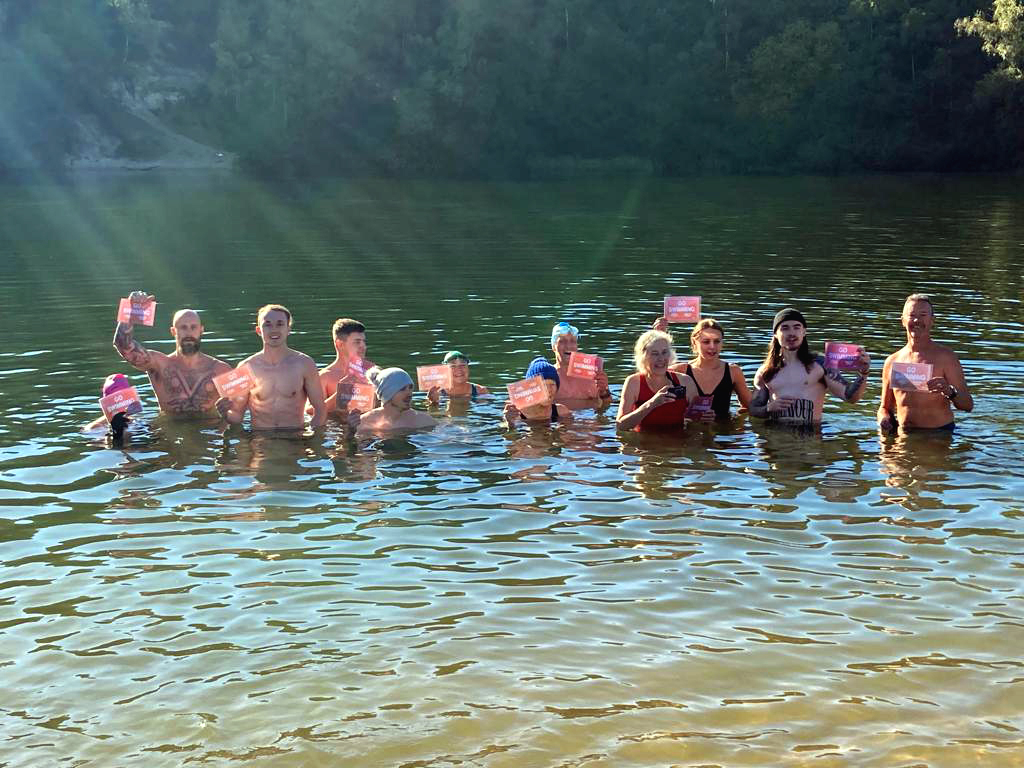
14 dipped or swam in Brickyard Lake, with six friends on the shore (and a couple of people who stopped to talk to us), then 5 swam on the west side of Great Lake, with 5-9 friends on the bank (several came along for a chat). The temperature in both lakes was 13.5°, warmer than rivers around the same time, and a temperature that most were very well used to. Each lovely sandy beach had shallow water gradually deepening into the lake.
The swimmers varied in experience, most not the racing type of open water swimmers, but those that swim for fun and the benefits of cool water and the outdoors. Many are all year swimmers and dippers, including some that break the ice in winter, others who sometimes wear a wetsuit but want to acclimatise without one in regular swims going into winter.
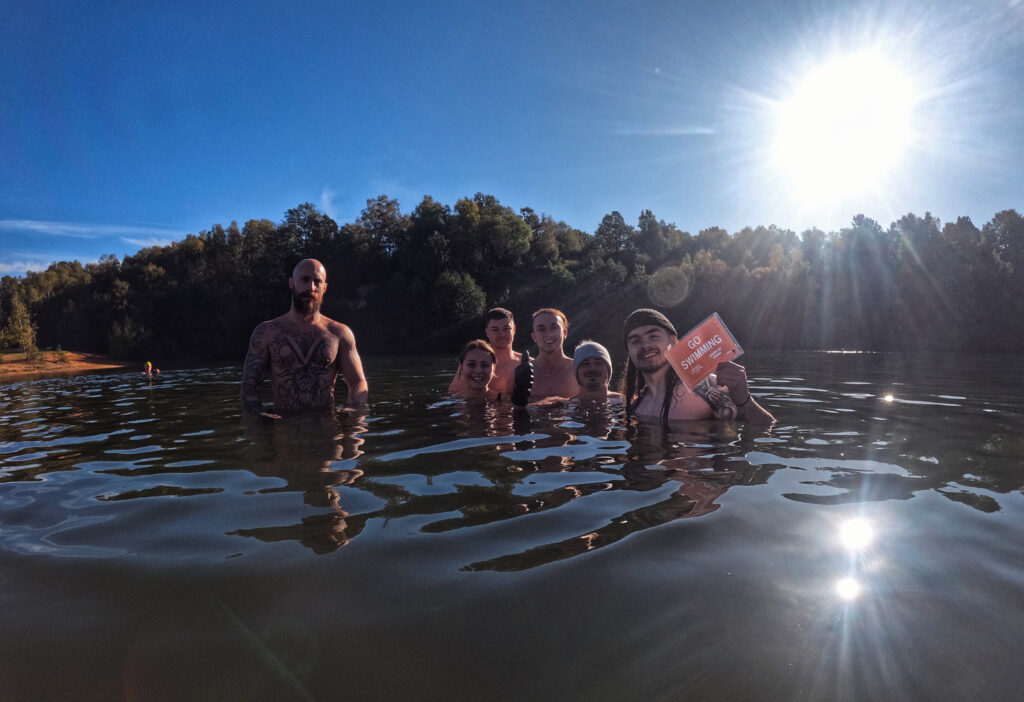
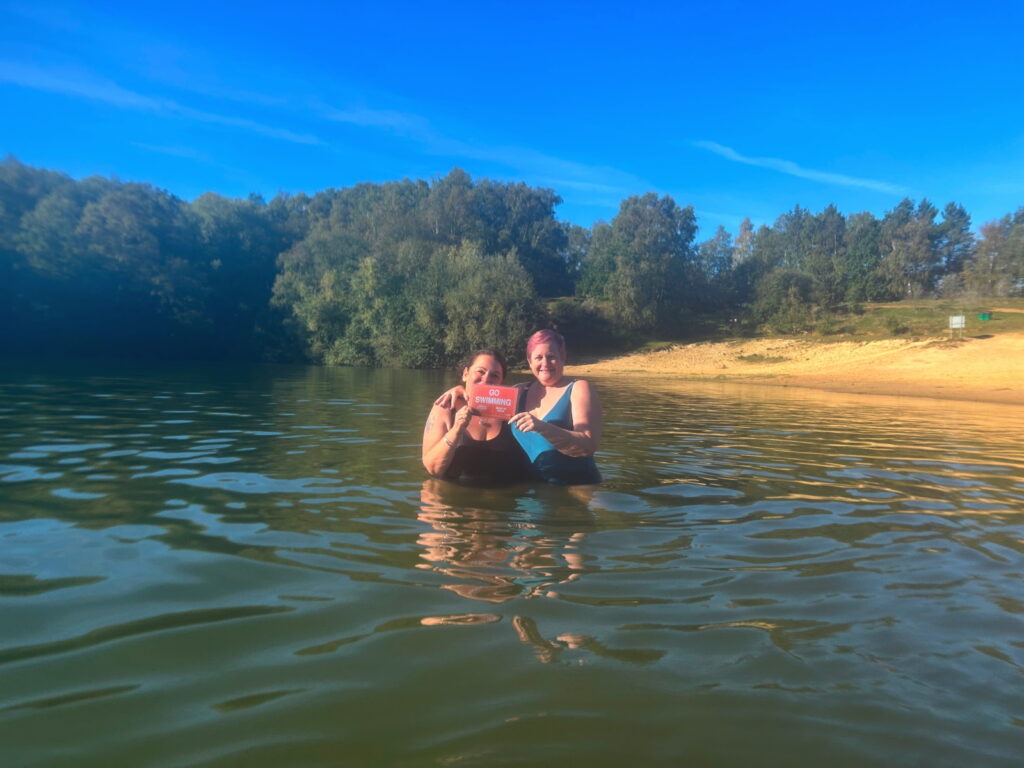
We assessed the risks at the lakes, including observing a small amount of blue-green algae on the western corner of Brickyard Lake – not enough to cause any issues to swimmers; measured the pH, which was normal in the Brickyard Lake, and 4.5 in the Great Lake; took the temperature, were aware of the depth further out and of potential windchill at Bawsey Bay – where no one chose to swim.
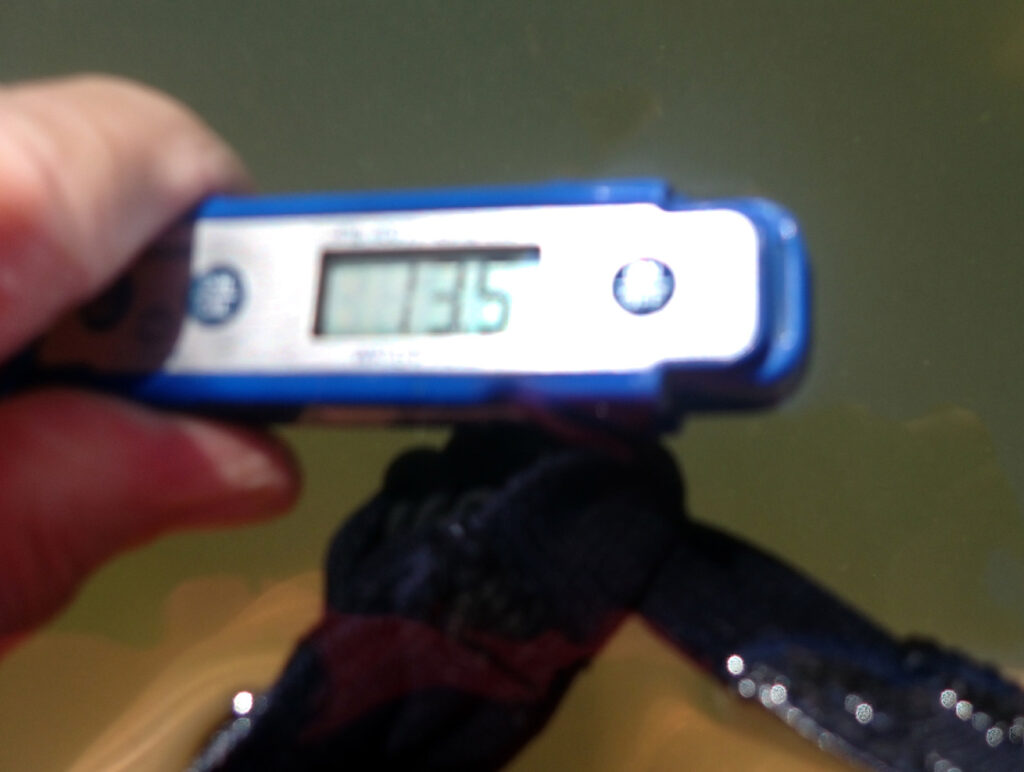
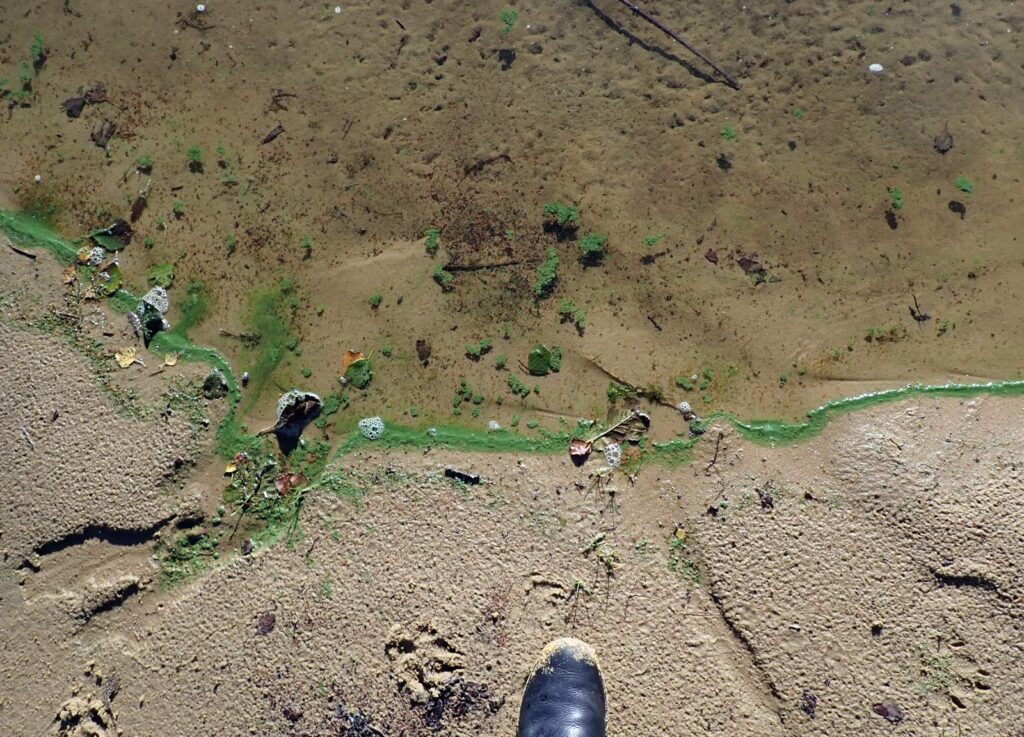
After our Brickyard Lake swim and on our walk around the Great Lake we discussed issues around swimming and jumping into water, and some of the attitudes to our activities from authorities, landowners and the public. Coming from different parts of the swimming and jumping community, we found there were some common factors. We see a real lack of understanding and (from many) an unwillingness to even contemplate what we know from experience and observation – that people can have fun doing these things perfectly safely and can learn from an early age how to do them, what the risks are and how to avoid coming to harm. Experienced swimmers and jumpers can pass on their knowledge to those newer to the activities and are a positive influence. We know how to assess what places are suitable. For example the experienced jumpers were clear that there were no suitable places to do this at Bawsey, while the experienced swimmers could see that the Bawsey lakes provide very suitable conditions for swimming and dipping for anyone – as long as they do this within their own capabilities and follow safety tips.
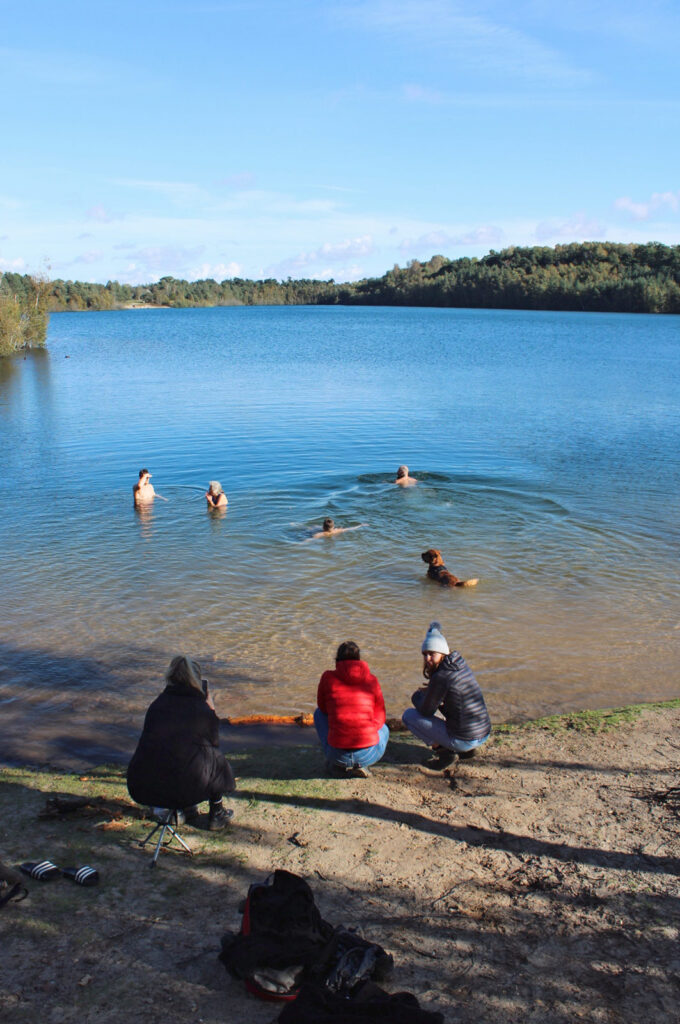
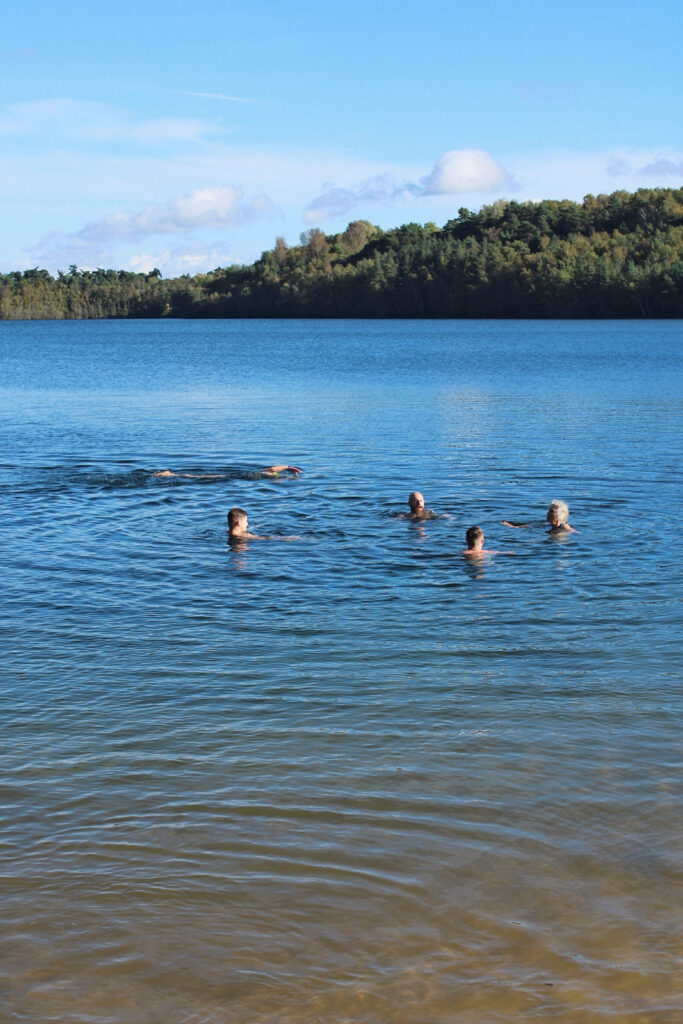
As we gathered at Brickyard Lake, representatives of the estate management came to talk to us. They said that they do not allow swimming and had not given us permission, they consider it dangerous, they would prefer us to go to the sea or to rivers or to swimming pools, and were concerned that some of us had chosen to walk in on the public footpath rather than paying for the car park (as several of us did because we were planning a walk in the area later). They then left us to our swim.
Afterwards they remarked on their Facebook page: “Interesting to note that, even though all were supposedly experienced outdoor swimmers, not one of them used a tow float or wetsuit!”, and that wetsuits were needed for warmth and buoyancy and to prevent cold water shock, and tow floats were needed in order to be visible, giving a link to a Swim England article on equipment needed for open water – one clearly aimed at people doing distance and competitive type open water swimming.
It seems that they are not aware of the variety of different types of swimmer that make up the vibrant and ever-growing outdoor swimming community. Several million outdoor swimmers around the country each year go dipping and swimming for pleasure, for enjoyment of nature and cool water, appreciating the benefits (we know from Swim England’s surveys). Many link up in informal swim groups where they share their experience and knowledge, and meet together to swim, in summer often alongside the many families that swim in their local water and have done for generations. Many swimmers like racing and distance swimming and would probably enjoy the opportunity to swim in a very large lake, too, and many swim in swimming pools, generally for training or for convenience in winter, but are quite clear that this provides a very different experience to the joy of swimming outdoors.
Perhaps they are also not aware of the wealth of accurate and useful information available to the outdoor swimming community, on the Survive section of The Outdoor Swimming Society website, on swim safety and risk assessment and more from Outdoor Swimmer magazine, and from a variety of other sources, including bloggers such as Open Water Wheway and this website, and from the informal swim groups.
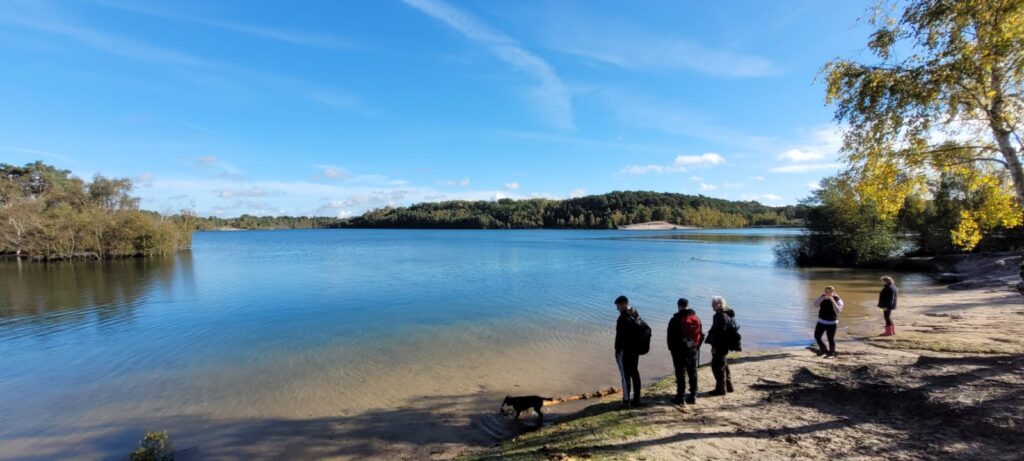
One writer about cold water and the benefits of outdoor swimming, expert adviser to the Outdoor Swimming Society, is Dr Mark Harper. He is a member of the team studying extreme cold led by Prof Mike Tipton, and an advocate for the public health benefits of outdoor swimming and for these to be available as widely as possible. Mark knows all about cold water shock and the other risks of cold and how to mitigate them. He explains them clearly, along with the way that exposure to cold can lead to many benefits to mental and physical health, in his book, ‘Chill: The Cold Water Swim Cure’ (available from bookshops including Waterstones), and in a number of videos including this talk on YouTube, https://www.youtube.com/watch?v=0pXLF0sucDU, about how your body reacts and adapts to cold water and the benefits that brings. As an experienced all year swimmer, including in icy conditions in Norway, he personally very rarely uses a wetsuit or a tow float (though suggests that if people want to then they should, while being aware of the reduced benefits from cold water). I think I would confidently listen to information given by someone who has literally written the book about cold water swimming!
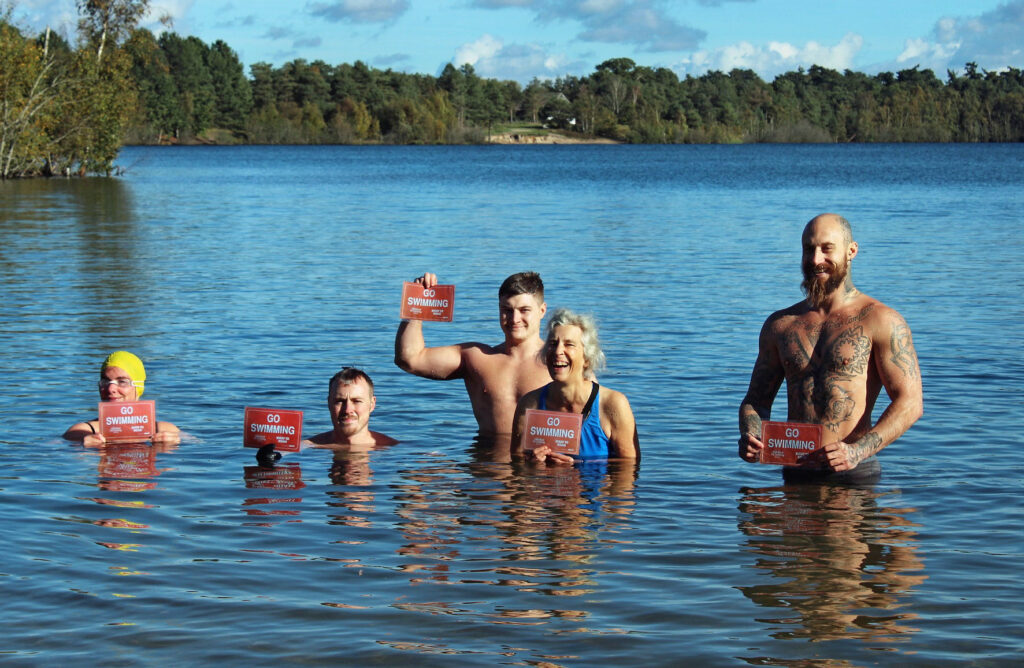
There appear to be an unusual number of claimed ‘dangers’ for the Bawsey lakes, many of which don’t stand up to examination as real risks for swimmers, nor do there appear to be any specific factors that make these lakes especially ‘dangerous’. However, all lakes and water bodies do have risks for swimming, and it is important that everyone understands exactly what these are and how to avoid coming to harm. The key risks are well known and only a small number of key pieces of information are needed for almost anyone to keep themselves or their children safe while swimming or paddling.
Key water safety information:
- avoid cold water shock by getting in gradually and waiting till it passes to swim off
- know what to do if you fall in or panic – Float To Live on your back and relax
- avoid getting too cold and stay close to shore unless experienced in cool water
- swim within your capabilities
- keep an eye on children and vulnerable people in your care
- do not get into the water to rescue anyone in trouble, instead call for help, tell them to float, throw something that floats.
We have examined each claimed risk mentioned for Bawsey, outlined whether it is a myth or a real risk, and listed real risks and how to stay safe, in this page on this website, Risks and Myths at Bawsey Lakes, or you can Download the note (Word.docx, 8 pages).
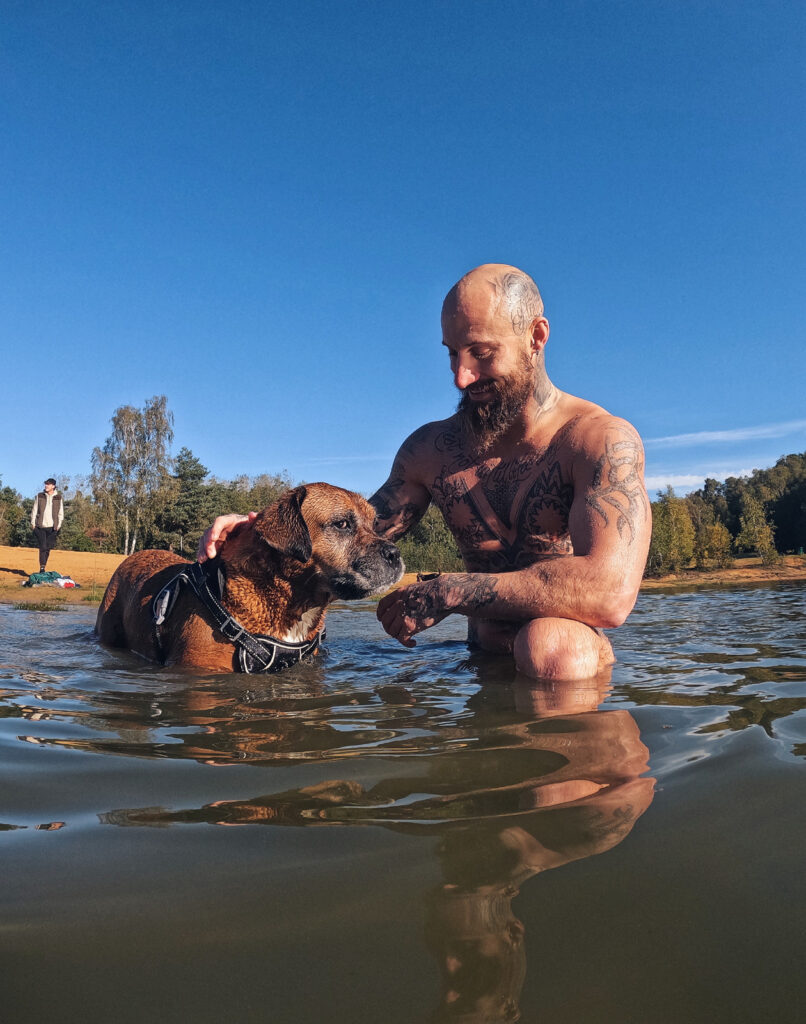
Those who met at the lakes went to have an enjoyable day out, and also to show their support for The Outdoor Swimming Society’s Inland Access Manifesto calling for freedom to swim and the call from Right to Roam https://www.righttoroam.org.uk/ for a right to responsible access to land and water, as in Scotland. Read more about Wild Swimming and Access. To show that we need more access to swim, we urge swimmers to Go Swimming!
Location details for Bawsey lakes, https://www.imogensriverswims.co.uk/blog/places/bawsey-pits/
[swim log 1681, 1682]
